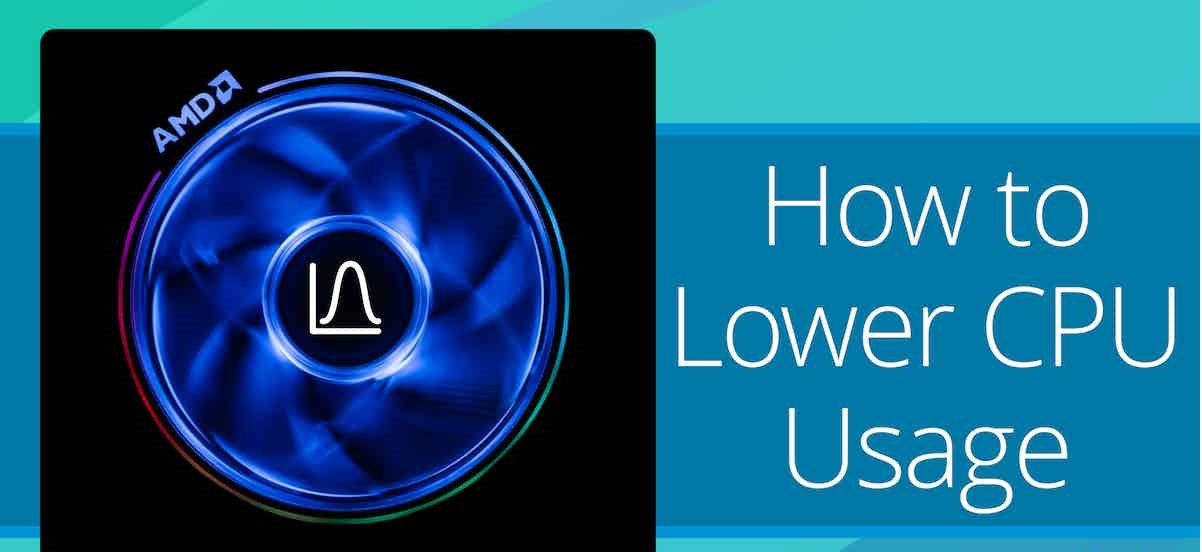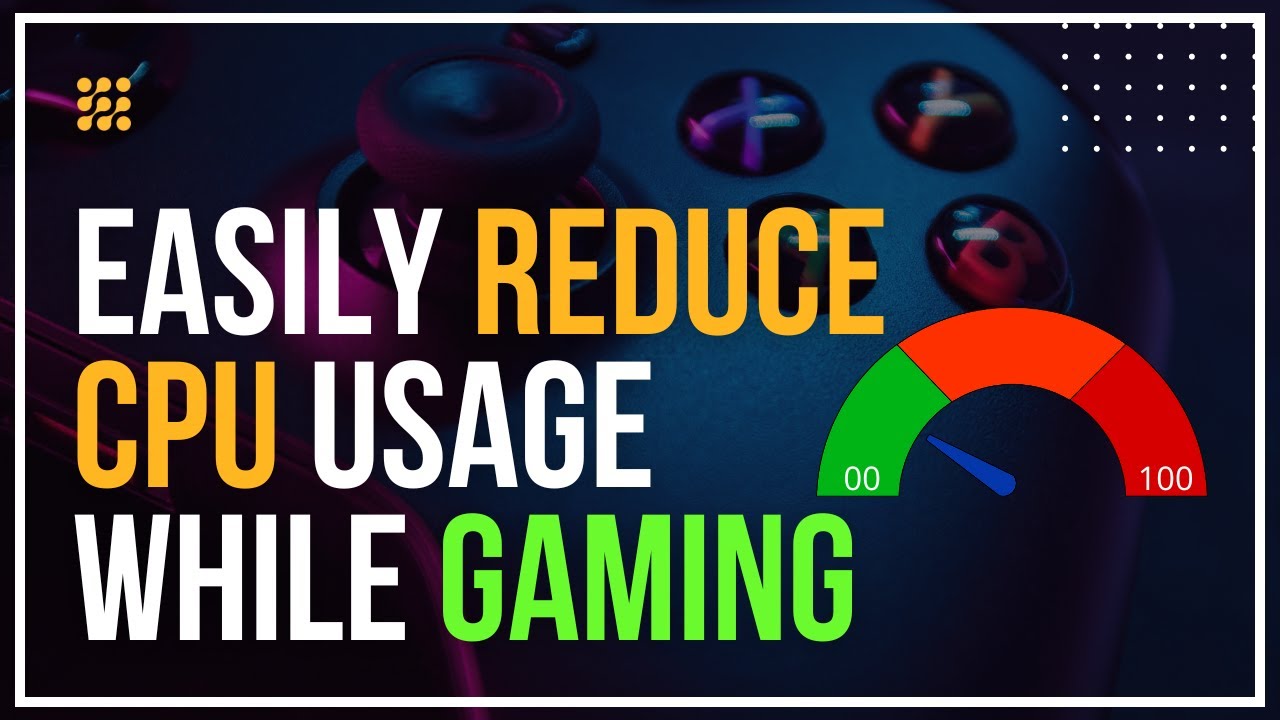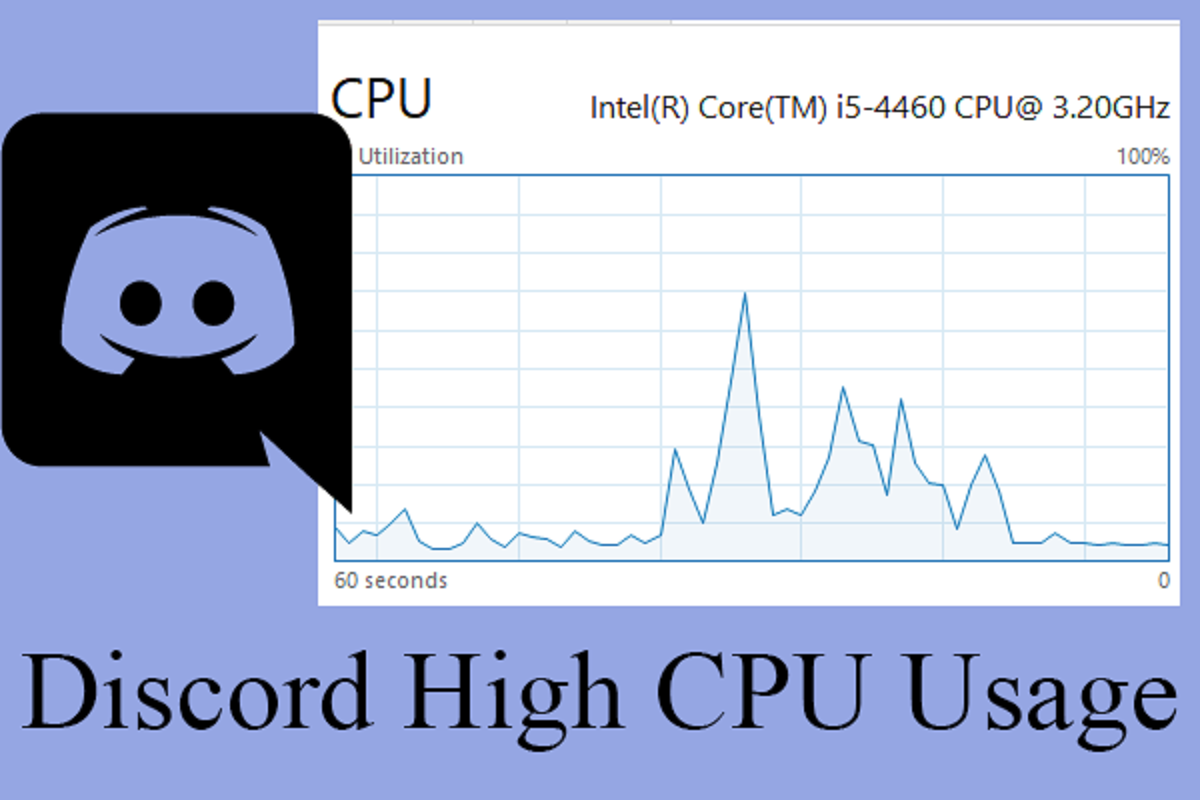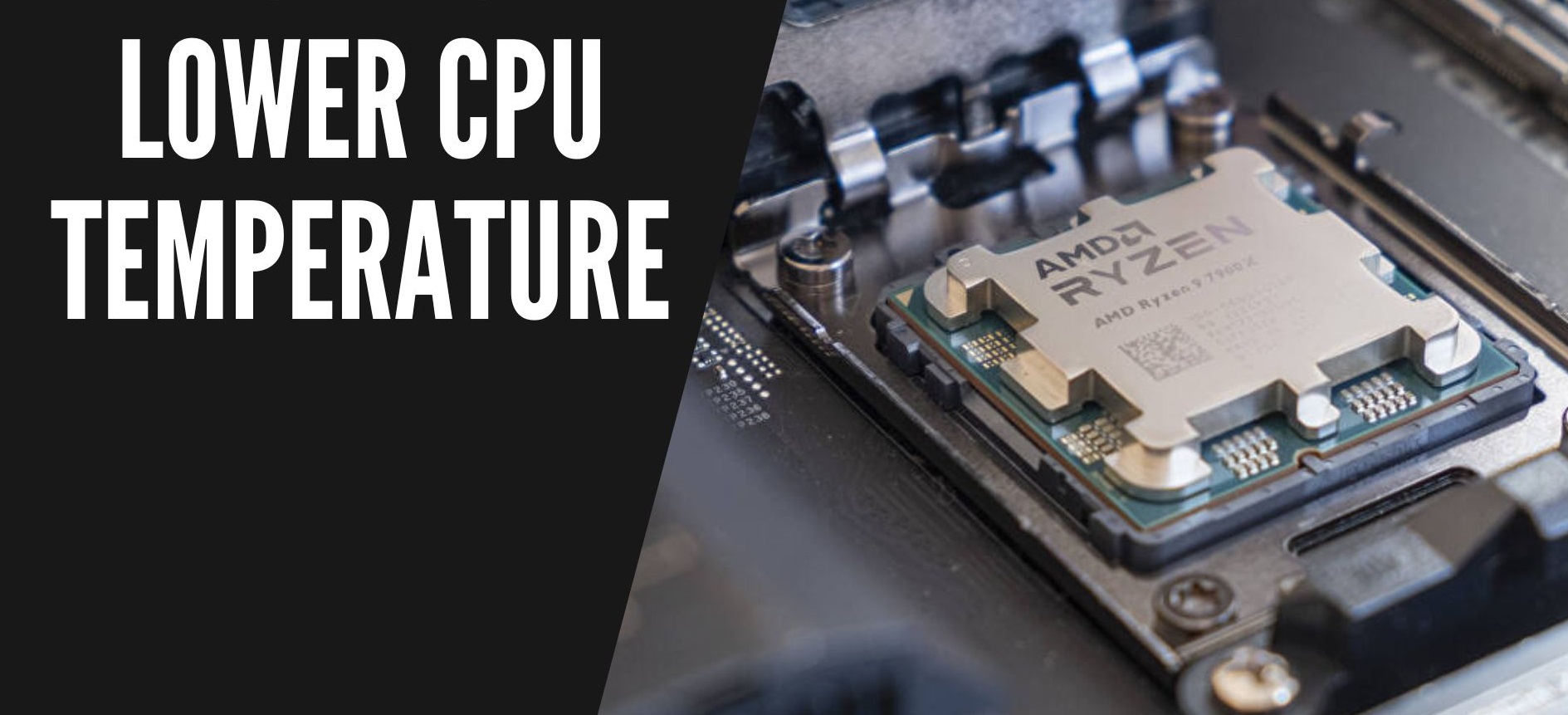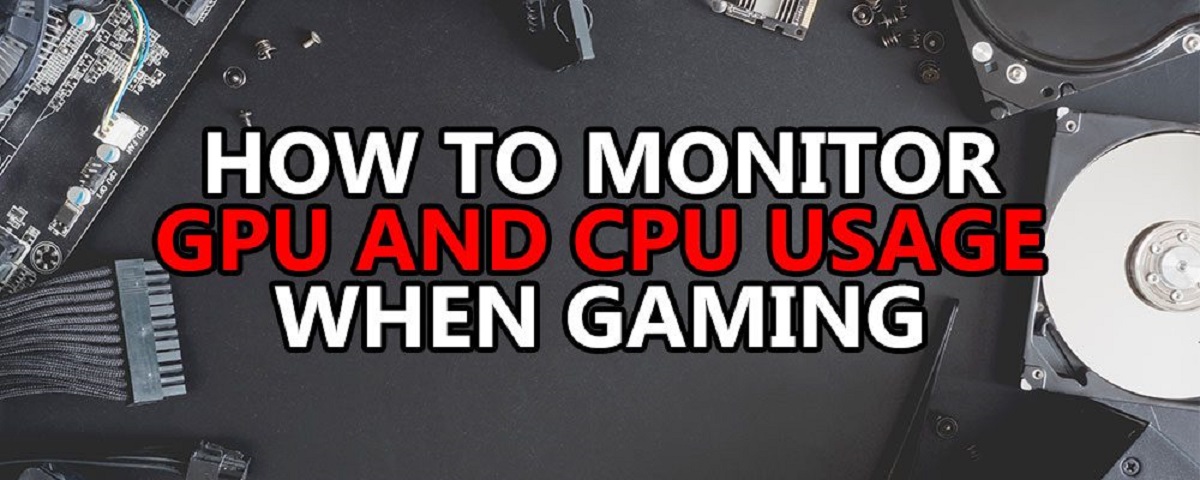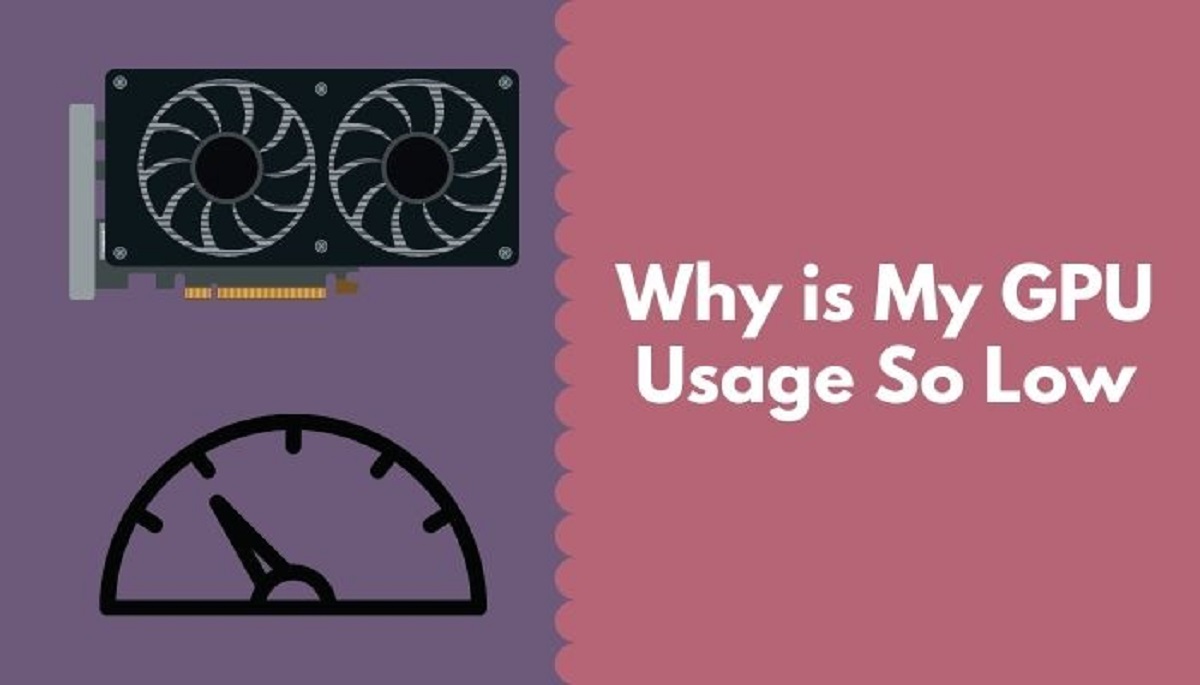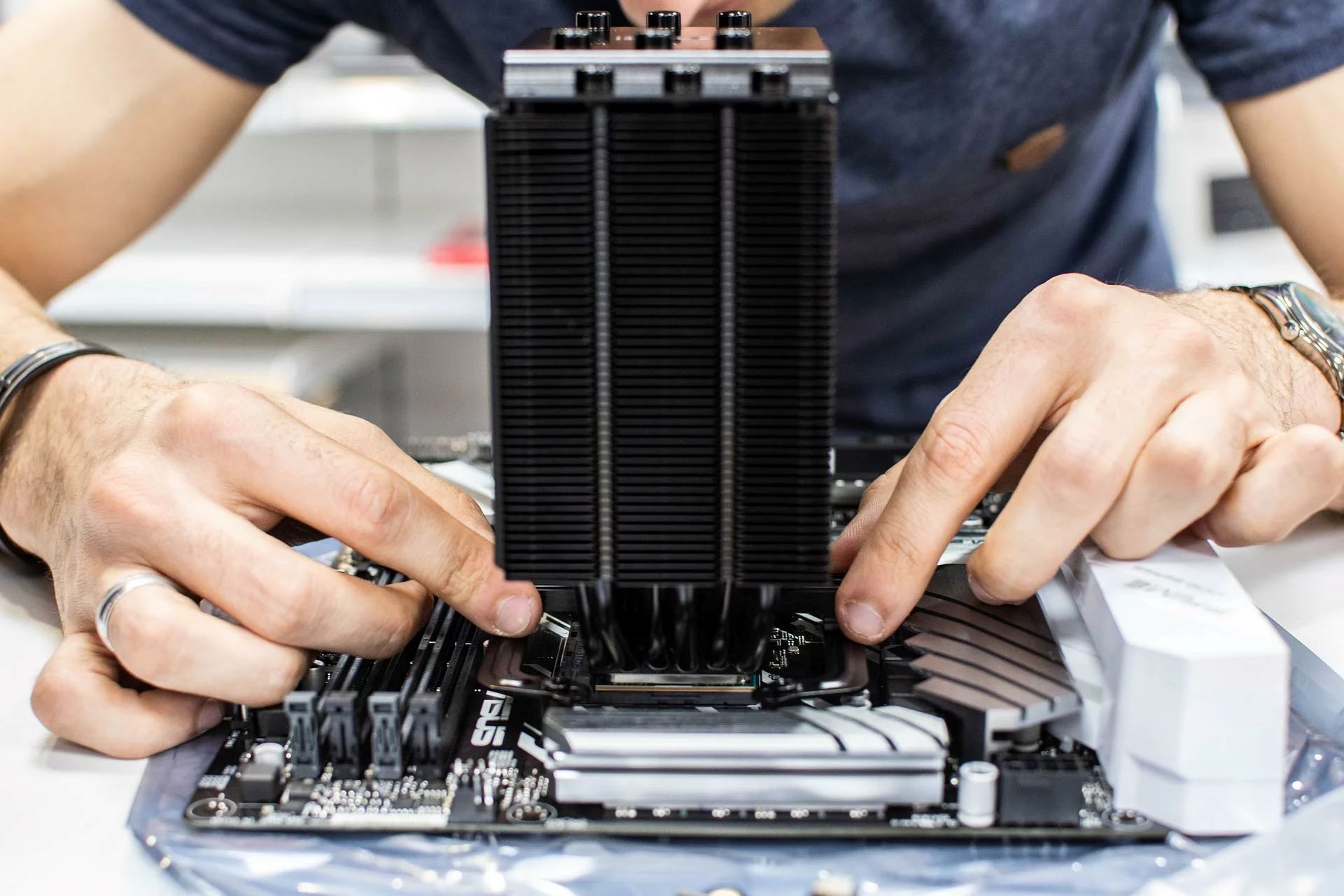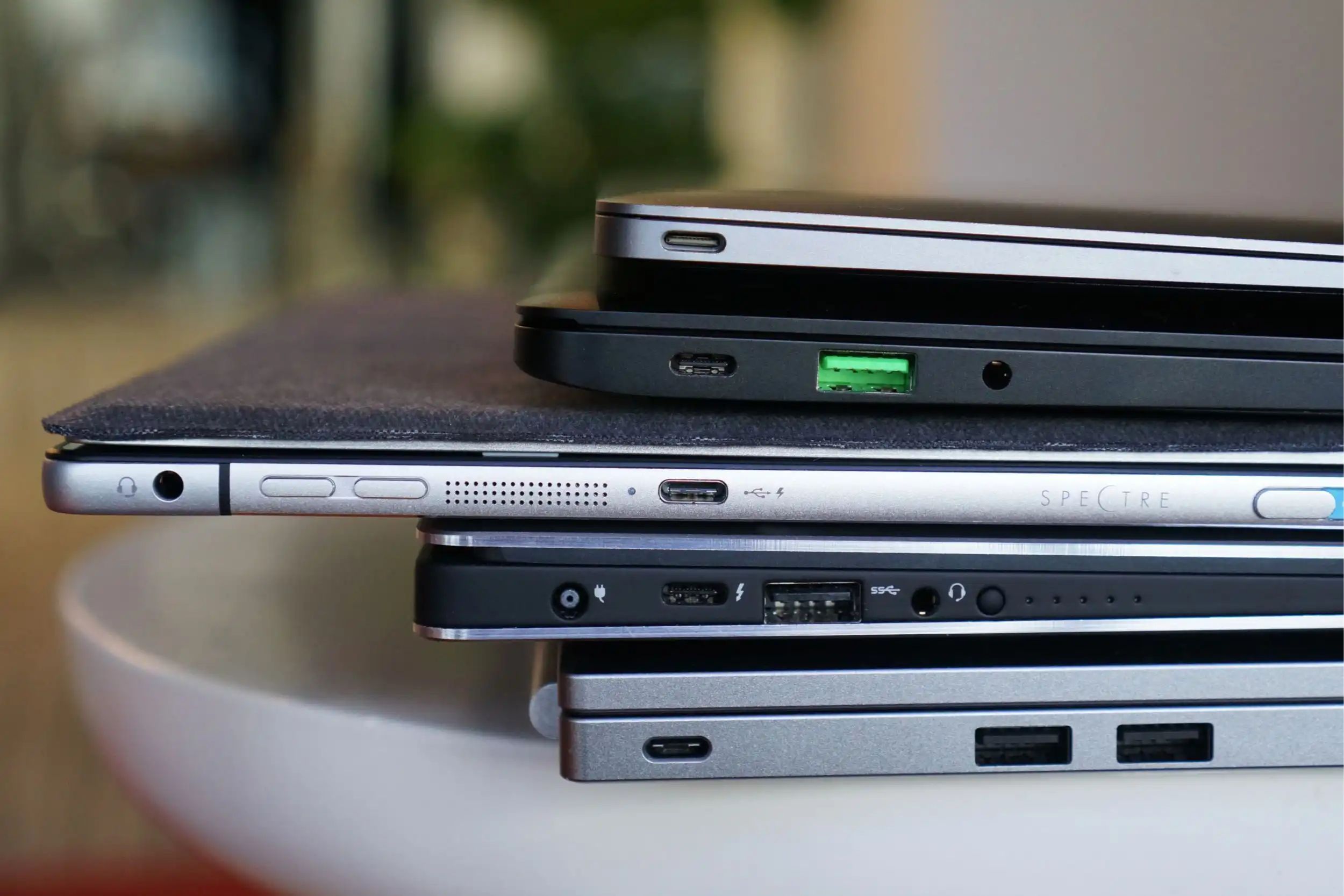Introduction
CPU usage refers to the amount of processing power that a computer’s central processing unit (CPU) is utilizing at a given time. When the CPU usage is high, it can slow down the overall performance of your computer and cause lag or freezing in programs and applications. If you encounter frequent high CPU usage, it’s important to find ways to lower it to ensure smooth and efficient functioning of your system.
High CPU usage can occur due to a variety of reasons, including running multiple programs simultaneously, outdated or incompatible drivers and software, presence of malware or viruses, unnecessary startup programs, extensive visual effects and animations, browser extensions and tabs overload, and even hardware limitations.
In this article, we will explore various methods and techniques to make CPU usage lower, allowing your computer to perform optimally. By implementing these strategies, you can enhance the speed and responsiveness of your system, reduce power consumption, and prevent overheating issues. Let’s delve into the steps you can take to lower CPU usage.
Understanding CPU Usage
Before we dive into ways to lower CPU usage, it’s important to have a clear understanding of what CPU usage actually means. CPU usage is a measure of how much of the computer’s processing power is being used at a specific time. It is typically expressed as a percentage, representing the proportion of CPU processing capacity that is being utilized.
When a program or process requires computational resources to perform tasks, it makes use of the CPU. The more intensive the tasks, the higher the CPU usage. This is why you may notice an increase in CPU usage when running resource-heavy programs like video editing software or playing graphics-intensive games.
Typically, when your computer is idle and not performing any demanding tasks, the CPU usage should be relatively low, ideally below 10%. However, if you notice that the CPU usage remains consistently high even when the computer is not in use or when running simple tasks, it indicates that there may be underlying issues that need to be addressed.
High CPU usage can lead to a range of performance issues, including slow response times, delays in opening programs, and overall sluggishness. Additionally, continuous high CPU usage can put a strain on the hardware components, leading to increased power consumption and the risk of overheating.
By understanding how CPU usage works and the factors that contribute to its increase, you can take proactive measures to lower CPU usage and optimize the performance of your computer. In the following sections, we will explore various techniques that can help you achieve this.
Ways to Lower CPU Usage
Experiencing high CPU usage can be frustrating, but there are several steps you can take to lower it and improve the performance of your computer. Here are some effective methods to reduce CPU usage:
- Close Unnecessary Programs and Processes: One of the simplest ways to lower CPU usage is by closing any unnecessary programs and background processes that are running. Check the system tray and taskbar for any unnecessary applications and close them to free up CPU resources.
- Adjust Power Settings: Tweaking your computer’s power settings can help reduce CPU usage. You can switch to a power plan that prioritizes energy efficiency, which can limit CPU usage during periods of inactivity.
- Update Drivers and Software: Outdated drivers and software can lead to compatibility issues and increased CPU usage. Make sure to regularly update your drivers and software to ensure optimal performance and compatibility with the latest hardware and operating system updates.
- Check for Malware and Viruses: Malware and viruses can significantly impact CPU usage. Perform regular scans with a reputable antivirus program to detect and remove any malicious software that might be causing high CPU usage.
- Disable Startup Programs: Some programs automatically start with your computer, consuming valuable CPU resources. Disable unnecessary startup programs to reduce CPU usage. You can manage startup programs through the Task Manager or System Configuration utility.
- Use a Lightweight Antivirus: If your current antivirus software is causing high CPU usage, consider using a lighter alternative. There are several lightweight antivirus programs available that provide effective protection while consuming fewer system resources.
- Utilize Task Manager to Identify Resource-Hungry Processes: The Task Manager is a powerful tool that allows you to monitor and manage CPU usage. Use it to identify processes and applications that are using a significant amount of CPU resources and consider closing or optimizing them.
- Limit the Number of Browser Tabs and Extensions: Having too many browser tabs and extensions can strain your CPU. Limit the number of open tabs and disable unnecessary extensions to reduce CPU usage while browsing the internet.
- Adjust Visual Effects and Animations: Windows operating systems offer various visual effects and animations that can impact CPU usage. Disable or reduce these effects through the system settings to lower CPU usage and improve overall performance.
- Clean Up and Optimize Your Hard Drive: A cluttered and fragmented hard drive can contribute to high CPU usage. Regularly clean up unnecessary files, uninstall unused programs, and defragment your hard drive to improve performance and reduce CPU load.
- Upgrade Your Hardware, if necessary: If your computer consistently experiences high CPU usage despite optimization efforts, it may be time to consider upgrading your hardware components. Upgrading your CPU, adding more RAM, or switching to a solid-state drive (SSD) can significantly reduce CPU usage and boost overall performance.
By implementing these techniques, you can effectively lower CPU usage and improve the speed and responsiveness of your computer. It’s important to note that the optimal combination of methods may vary depending on your specific computer setup and usage requirements.
Close Unnecessary Programs and Processes
One of the most straightforward ways to lower CPU usage is to close any unnecessary programs and processes that are running on your computer. Many times, we tend to keep multiple applications open simultaneously, even though we may not actively be using all of them. Each open program utilizes CPU resources, leading to increased CPU usage and potential performance issues.
To determine which programs and processes are consuming a significant amount of CPU, you can use the Task Manager. Press Ctrl + Shift + Esc or right-click on the taskbar and select “Task Manager” to open it. Under the “Processes” tab, you will see a list of all currently running processes along with their CPU usage percentages.
Carefully review the list and identify any programs or processes that are utilizing a large portion of CPU resources. These might include resource-heavy applications, background software updaters, or unnecessary system processes that are running in the background.
To close a program or process, simply select it from the list and click on the “End Task” button at the bottom right corner of the Task Manager window. However, exercise caution when terminating processes, as some may be essential for the functioning of your operating system or other applications.
Once you have closed unnecessary programs and processes, monitor your CPU usage to see if it has decreased. You should notice a significant improvement in CPU performance, resulting in faster and more responsive computer operations.
In addition to manually closing programs, it’s also helpful to develop the habit of regularly closing unused applications when you’re finished using them. By keeping only the necessary programs open, you can minimize CPU usage and ensure that your computer runs more efficiently.
Remember, reducing CPU usage through closing unnecessary programs and processes is an ongoing practice. Make it a habit to periodically check the Task Manager and close any resource-intensive applications or processes that may be causing high CPU usage.
Adjust Power Settings
Adjusting your computer’s power settings can be an effective way to lower CPU usage. By optimizing the power plan, you can prioritize energy efficiency and limit the CPU’s power consumption during periods of inactivity.
To adjust the power settings in Windows, go to the Control Panel and search for “Power Options.” Click on the “Power Options” or “Edit Plan Settings” to access the power plans available on your computer.
There are usually three power plans available: Balanced, Power Saver, and High Performance. The default power plan is often set to Balanced, which provides a balance between energy efficiency and performance. However, if you’re experiencing high CPU usage and want to lower it, consider switching to the Power Saver plan.
The Power Saver plan is designed to conserve energy and reduce CPU usage by limiting the maximum processing power. It slows down the CPU to minimize power consumption and can be especially useful if you’re working on tasks that don’t require intense processing power, such as browsing the internet or working on documents.
However, keep in mind that using the Power Saver plan may affect overall system performance, as the CPU will operate at a lower speed. If you need to perform resource-demanding tasks, such as gaming or video editing, it’s recommended to switch to the Balanced or High Performance power plan temporarily to ensure maximum performance.
Additionally, you can also customize the power plan settings to further optimize CPU usage. In the power options, click on “Change advanced power settings” to access the advanced power settings menu.
Within the advanced power settings, you can adjust various options such as processor power management, minimum and maximum processor state, and cooling policy. These settings allow you to control the CPU’s power usage and can be fine-tuned based on your specific needs and preferences.
By adjusting your computer’s power settings and utilizing the Power Saver plan or customizing the advanced settings, you can effectively lower CPU usage and improve energy efficiency. However, keep in mind that if you require maximum performance, switching to the Balanced or High Performance plan may be necessary.
Update Drivers and Software
Outdated or incompatible drivers and software can often contribute to high CPU usage. When drivers or software are not updated, they may not work efficiently with your operating system, resulting in increased CPU usage and potential performance issues. Updating drivers and software to their latest versions can help resolve compatibility issues and optimize CPU usage.
There are a few ways to update drivers and software on your computer. One common method is to visit the official website of the hardware manufacturer or software developer and look for the latest driver or software version. Download and install the updated version according to the provided instructions.
Another option is to use built-in tools in your operating system that can automatically check for and install updates. For example, in Windows, you can use the Device Manager to update drivers. Right-click on “This PC” or “My Computer” and select “Properties,” then click on “Device Manager.” Expand the categories to find the specific device, right-click on it, and choose “Update driver.” Follow the prompts to complete the update.
For software updates, many programs have a built-in update feature that you can access through the program’s settings or preferences menu. Alternatively, you can often find a “Check for updates” option within the software’s main menu.
Regularly updating drivers and software not only ensures compatibility and optimal performance but also helps with security. In addition to improving CPU usage, updates often include bug fixes, feature enhancements, and vulnerability patches that protect your system against potential security threats.
Remember to check for updates for all your installed drivers, including graphics, audio, network, and chipset drivers. Additionally, keep your operating system and antivirus software up to date as well.
By staying proactive and maintaining up-to-date drivers and software, you can effectively lower CPU usage, enhance system stability, and improve the overall performance of your computer.
Check for Malware and Viruses
Malware and viruses can significantly impact CPU usage by running malicious processes in the background, consuming valuable system resources. If your computer is experiencing high CPU usage, it’s important to check for malware and viruses and take necessary actions to remove them.
The first step is to ensure that you have reliable antivirus software installed on your computer. There are many reputable antivirus programs available, both free and paid, that can effectively detect and remove malware and viruses.
Perform a full system scan using your antivirus software to check for any infected files or malicious programs. Allow the scan to complete, and follow the prompts to quarantine or remove any detected threats. Additionally, make sure that your antivirus software is up to date with the latest virus definitions for optimal protection.
In addition to scanning with antivirus software, you can also use specialized antimalware programs to perform a more thorough check for malware. These programs often focus on detecting and removing specific types of malware that may be missed by general antivirus software.
In cases where malware or viruses have already compromised your computer’s performance, it may be necessary to use advanced malware removal tools or seek assistance from professional technicians to thoroughly clean and restore your system.
It’s important to note that prevention is key to avoiding malware and viruses in the first place. To minimize the risk of infection, practice safe browsing habits, avoid downloading files from suspicious websites or unknown sources, and be cautious when opening email attachments or clicking on unfamiliar links.
Regularly updating your operating system, as mentioned in the previous section, is also crucial for closing any security vulnerabilities that could be exploited by malware and viruses.
By regularly checking for malware and viruses, and taking immediate action to remove them, you can effectively lower CPU usage and ensure the smooth and secure operation of your computer.
Disable Startup Programs
When you start your computer, certain programs and processes are set to automatically launch and run in the background. These startup programs can consume valuable CPU resources and contribute to high CPU usage, even when you’re not actively using those programs.
Disabling unnecessary startup programs is a simple yet effective way to lower CPU usage and improve the overall performance of your computer. By reducing the number of programs that launch at startup, you can free up CPU resources for more important tasks.
To disable startup programs in Windows, you can use the built-in System Configuration utility or the Task Manager. Here’s how:
- System Configuration Utility:
- Press the Windows key + R, type “msconfig” (without quotes), and press Enter.
- In the System Configuration window, navigate to the “Startup” tab.
- You will see a list of programs with checkboxes next to them.
- Deselect the checkboxes next to the programs that you don’t want to run at startup.
- Click “OK” to save the changes.
- Restart your computer for the changes to take effect.
- Task Manager:
- Press Ctrl + Shift + Esc or right-click on the taskbar and select “Task Manager” to open it.
- Navigate to the “Startup” tab in the Task Manager window.
- You will see a list of programs and their startup impact.
- Right-click on the program that you want to disable and select “Disable” from the context menu.
- Repeat this step for each program you wish to disable.
- Close the Task Manager.
- Restart your computer for the changes to take effect.
Disabling startup programs should be approached with caution. Some programs may be essential for the proper functioning of your computer or required for specific tasks. As a general guideline, it’s safe to disable programs that are non-essential, such as media players, chat clients, or auto-updaters for certain software.
Regularly review and manage your startup programs, as new programs may automatically add themselves to the startup list as you install new software or drivers. By keeping the startup program list clean and minimal, you can reduce CPU usage and improve the startup time of your computer.
Remember, if you disable a startup program and later find that you need it, you can always re-enable it through the same process or by changing the settings within the program itself.
Use a Lightweight Antivirus
Antivirus software is essential for protecting your computer from malware, viruses, and other security threats. However, some antivirus programs can be resource-intensive and consume a significant amount of CPU power, leading to high CPU usage and potential performance issues. To lower CPU usage, consider using a lightweight antivirus program that provides effective protection while minimizing system resource usage.
Lightweight antivirus software is designed to be efficient and streamlined, using fewer system resources compared to their more feature-rich counterparts. These programs often have a smaller memory footprint, use optimized scanning algorithms, and have minimal impact on CPU usage.
When choosing a lightweight antivirus program, look for software that has a proven track record of detecting and removing malware effectively. Read user reviews and make sure the program is from a reputable antivirus software provider.
Keep in mind that lightweight antivirus software may not have all the advanced features found in more comprehensive security suites. However, they still provide essential protection against viruses, Trojans, and other malware.
Aside from using a lightweight antivirus program, there are other practices you can implement to further reduce CPU usage related to antivirus software:
- Ensure that your antivirus software is up-to-date. Regular updates include important bug fixes and enhancements that improve performance and efficiency.
- Schedule regular scans during periods when you’re not actively using your computer. This will minimize the impact on CPU usage during important tasks.
- Configure the antivirus software to exclude scanning certain files or folders that are not critical and don’t require constant monitoring. This can reduce CPU usage when performing specific tasks.
- Adjust the real-time scanning settings of the antivirus software. Lowering the scanning sensitivity can reduce CPU usage, but keep in mind that it may impact the overall level of protection.
Remember, while using a lightweight antivirus program can help lower CPU usage, it’s important to strike a balance between system performance and the level of protection required for your specific needs. Regularly evaluate your antivirus software to ensure optimal performance and consider upgrading to a more robust solution if your security needs change.
Utilize Task Manager to Identify Resource-Hungry Processes
Task Manager is a powerful tool integrated into the Windows operating system that allows you to monitor and manage various aspects of your computer’s performance, including CPU usage. By utilizing Task Manager, you can identify resource-hungry processes that may be causing high CPU usage and take appropriate actions to address them.
To access Task Manager, you can simply right-click on the taskbar and select “Task Manager” or press Ctrl + Shift + Esc on your keyboard.
Once you have opened Task Manager, navigate to the “Processes” or “Details” tab, depending on your Windows version. This tab will display a list of all currently running processes on your computer, along with their corresponding CPU usage percentages.
Sort the processes by CPU usage by clicking on the “CPU” column heading to identify the processes that are utilizing the most CPU resources.
In some cases, you may notice that a single program or process is consuming an excessively high amount of CPU power. This could indicate a malfunction, software bug, or compatibility issue. In such cases, you can consider closing or restarting the problematic program to resolve the high CPU usage.
However, it’s important to exercise caution when terminating processes, as some are essential for the proper functioning of your operating system and other applications. Be sure to research the process name online to better understand its purpose before taking any action.
If you’re unable to identify the specific process causing high CPU usage, you can use online resources or antivirus software to cross-reference the process name and check if it’s associated with any known malware or viruses. This can help you identify and address potential security threats that may be contributing to high CPU usage.
Additionally, you can use Task Manager to monitor real-time CPU usage, allowing you to see if CPU usage spikes occur during specific tasks or when running particular programs. This information can aid in troubleshooting and identifying the root cause of high CPU usage issues.
By utilizing Task Manager to identify resource-hungry processes, you can take informed actions to optimize CPU usage and improve the overall performance of your computer.
Limit the Number of Browser Tabs and Extensions
Browsers have become an essential part of our digital lives, allowing us to access a variety of websites and online services. However, having too many open tabs and extensions in your browser can lead to increased CPU usage, affecting the overall performance of your computer. By limiting the number of browser tabs and extensions, you can reduce CPU usage and improve your browsing experience.
Each open tab in your browser consumes CPU resources, as it requires the browser to render and process the content of that tab. The more tabs you have open, the higher the CPU usage will be, especially if those tabs contain resource-intensive elements such as videos or complex web applications.
While it may be tempting to keep multiple tabs open for easy access, it’s a good practice to close tabs that you no longer need. By closing unnecessary tabs, you can free up CPU resources and reduce CPU usage.
Similarly, browser extensions can also contribute to high CPU usage. Extensions can add extra functionality and features to your browser, but they can also consume system resources. Some extensions constantly run in the background, performing tasks and monitoring web pages, which can impact CPU usage.
Review the extensions installed in your browser and consider disabling or removing any that you no longer use or that are not essential. To manage extensions, go to your browser’s settings or preferences menu and look for the extensions or add-ons section. From there, you can enable or disable specific extensions.
It’s worth noting that certain extensions, such as ad blockers or security-related extensions, are known to improve browsing performance and protect against potential malware, so consider keeping those that provide essential functionality.
If you frequently find yourself needing to refer back to specific web pages, consider using bookmarking or saving them as favorites instead of keeping them open in separate tabs.
By limiting the number of open tabs and disabling unnecessary extensions, you can significantly decrease CPU usage and improve the efficiency of your browsing sessions. You’ll likely notice a smoother and more responsive browsing experience, especially when dealing with content-heavy websites or resource-intensive web applications.
Remember to regularly review your tabs and extensions, closing or disabling any that are no longer needed, to keep CPU usage optimized and ensure a seamless browsing experience.
Adjust Visual Effects and Animations
Visual effects and animations in your operating system can make your computer interface more visually appealing, but they can also contribute to increased CPU usage. Adjusting these visual settings can help lower CPU usage and improve overall system performance.
Windows operating systems offer a range of visual effects and animations, such as window animations, menu transitions, and desktop effects. While these visual enhancements can enhance the user experience, they can also consume CPU resources, especially on older or less powerful hardware.
To adjust visual effects and animations in Windows, follow these steps:
- Right-click on the “Start” button and select “System” or “System Properties.”
- In the System window, click on “Advanced system settings” on the left side.
- A new window will open. Click on the “Settings” button under the “Performance” section.
- In the Performance Options window, you can choose between different preset options or customize the visual effects individually by selecting or deselecting the checkboxes.
- If you want to prioritize performance over visuals, select the “Adjust for best performance” option. This will disable all visual effects.
- If you prefer a balance between performance and visuals, choose the “Custom” option, and selectively enable the effects that are important to you.
- Click “Apply” and then “OK” to save the changes.
By disabling or reducing visual effects and animations, you can lower CPU usage and allocate system resources to more important tasks, resulting in improved overall performance and responsiveness.
Keep in mind that disabling visual effects and animations will make your system appear less visually appealing, but the trade-off is worth it if you’re experiencing high CPU usage and slow system performance.
In addition to adjusting visual effects and animations in your operating system, you can also check if individual applications or programs have their own visual settings that you can modify. Many software applications offer options to disable or reduce animations and visual effects within their settings or preferences menus.
Overall, tweaking the visual settings to prioritize performance rather than fancy effects can help lower CPU usage and optimize system resources for smoother and more efficient operation.
Clean Up and Optimize Your Hard Drive
Over time, your hard drive can accumulate unnecessary files, temporary data, and fragmented data, which can contribute to high CPU usage and sluggish system performance. Cleaning up and optimizing your hard drive can help lower CPU usage and improve the overall responsiveness of your computer.
Here are some steps you can take to clean up and optimize your hard drive:
- Delete Unnecessary Files: Start by removing any unnecessary files from your hard drive. These may include temporary files, duplicate files, outdated backups, and downloaded files that you no longer need. You can use the Disk Cleanup utility in Windows or third-party software to help you identify and remove these files.
- Uninstall Unused Programs: Review the list of installed programs on your computer and uninstall any that you no longer use. Unused programs can take up valuable disk space and may have background processes that contribute to high CPU usage.
- Defragment Your Hard Drive: Over time, files on your hard drive can become fragmented, meaning they are scattered across different sections of the disk. This can result in slower access times and increased CPU usage. Use the built-in Disk Defragmenter tool in Windows to defragment your hard drive and rearrange files for better performance.
- Use Disk Cleanup Tools: Many software applications offer disk cleanup and optimization tools that can help remove junk files, clear browser caches, and clean up temporary files. These tools can assist in freeing up disk space and improving overall system performance.
- Check for Disk Errors: Use the built-in Error Checking tool in Windows to scan your hard drive for errors. This tool can identify and fix any file system errors that may contribute to high CPU usage and system instability.
- Consider Using an SSD: If your computer still uses a traditional hard drive, consider upgrading to a solid-state drive (SSD). SSDs offer faster read/write speeds and improved performance compared to mechanical hard drives.
Cleaning up and optimizing your hard drive should be performed regularly to maintain optimal system performance. By removing unnecessary files, uninstalling unused programs, defragmenting your hard drive, and addressing any disk errors, you can lower CPU usage and enjoy a faster, more efficient computing experience.
Remember to back up your important files before performing any disk cleanup or optimization tasks to avoid accidental data loss.
Upgrade Your Hardware, if necessary
If you have tried various software optimizations and are still experiencing persistently high CPU usage, it might be time to consider upgrading your hardware components. Upgrading your hardware can significantly improve system performance and lower CPU usage, especially if your current hardware is outdated or not powerful enough to handle your computing needs.
Here are a few hardware components you might consider upgrading:
- CPU: The CPU (Central Processing Unit) is the primary component responsible for executing instructions and performing calculations on your computer. Upgrading to a more powerful CPU can help improve overall system performance and reduce CPU usage.
- RAM: Insufficient RAM (Random Access Memory) can lead to high CPU usage as the system compensates by using the hard drive as virtual memory. Adding more RAM can provide the necessary capacity for your computer to handle multiple tasks efficiently and reduce the load on the CPU.
- Storage: Upgrading to a solid-state drive (SSD) can significantly reduce CPU usage and improve overall system responsiveness. SSDs offer faster read/write speeds compared to traditional mechanical hard drives, resulting in quicker access to files and data.
- Graphics Card: If you use your computer for graphics-intensive tasks such as gaming or video editing, upgrading to a more capable graphics card can offload some of the processing tasks from the CPU, leading to lower CPU usage and improved performance.
- Motherboard: In some cases, upgrading the motherboard may be necessary if you want to install a newer generation CPU or take advantage of advanced features and technologies that are not supported by your current motherboard.
- Power Supply: If you are upgrading other hardware components, it’s important to ensure that your power supply unit (PSU) can handle the increased power requirements. Upgrading to a higher wattage PSU may be necessary to avoid performance issues and potential system instability.
Before considering hardware upgrades, it’s recommended to consult with a knowledgeable professional or conduct thorough research to ensure compatibility and optimal performance gains. Upgrading hardware components can be a significant investment, so it’s important to assess your specific needs and determine which components will provide the most noticeable improvements.
Remember that upgrading hardware components should be done with careful consideration, as it may require specific technical expertise and can affect other aspects of your computer. If you are unsure or uncomfortable with performing the upgrades yourself, consult with a professional technician or seek assistance from a reputable service center.
By upgrading your hardware, you can significantly reduce CPU usage and unlock the full potential of your computer, resulting in smoother overall performance and improved user experience.
Conclusion
High CPU usage can significantly impact the performance of your computer, causing slowdowns, delays, and overall system instability. However, by implementing the strategies mentioned in this article, you can effectively lower CPU usage and optimize the performance of your system.
From closing unnecessary programs and adjusting power settings to updating drivers and software, checking for malware and viruses, and disabling startup programs, each method plays a role in reducing CPU usage. Additionally, utilizing Task Manager to identify resource-hungry processes, limiting the number of browser tabs and extensions, and adjusting visual effects and animations can further optimize CPU performance.
If software optimizations alone aren’t enough, upgrading hardware components such as the CPU, RAM, storage, graphics card, motherboard, or power supply can provide significant boosts in system performance and lower CPU usage.
It’s important to remember that the optimal combination of methods may vary depending on your specific computer setup and usage requirements. Experiment and find the strategies that work best for you.
By implementing these techniques and regularly maintaining your computer, you can enjoy a faster, more responsive system with lower CPU usage. Remember to stay proactive by keeping your drivers and software up to date, practicing safe browsing habits, and performing routine cleanup and optimization tasks.
Lowering CPU usage not only improves the overall performance of your computer but also helps in conserving energy, reducing power consumption, and prolonging the lifespan of your hardware components. Take control of your CPU usage, and enjoy a smoother and more efficient computing experience.







